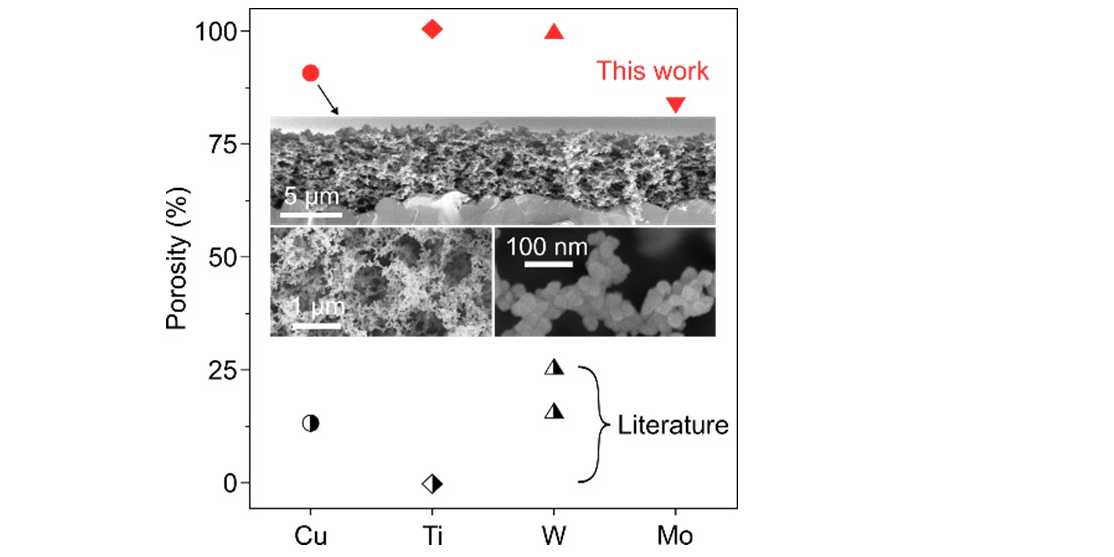Small Structures on Porous Metal-Nitride Films
We introduce a template-free method for the design of highly porous metal nitrides and demonstrate its impact on molecular sensing. Research led by Adrien Baut et al.

Metal nitrides (MN) possess exceptional catalytic, electronic, and physical properties making them widely used in (opto-)electronics and as hard coatings. When used as films in surface-active applications, however, their performance remains limited by poor mass transfer and reduced accessibility of reactive sites. This is associated to compact film architecture yielded by conventional deposition techniques (e.g., sputtering). Herein, a template-free method for the design of highly porous (≥84%) MN films with high compositional versatility, as shown for Cu3N, W2N, MoNx, and TiN, is demonstrated. These are obtained by conversion of fractal-like metal oxide (MOx) agglomerated films through dry nitridation. In case of Cu3N, monocrystalline oxide nanoparticles are converted to polycrystalline nitrides, as traced by X-ray diffraction and electron microscopy. Such films feature consistently lower resistances than their MOx counterparts, as well as high reactivity and mass transfer. This is exploited exemplarily for molecular sensing of NO2 at only 75 °C temperature, leading to up to a fivefold higher response with faster response time over more compact spin-coated films. As a result, this approach overcomes critical mass transfer performance limitations of MN films that are also relevant for other applications like electrocatalysis and energy storage.
Small Structure
Adrien Baut, Michael Pereira Martins, Andreas T. Güntner
Wiley online library
17.03.2025
Journal Link: external page Small Structure
ETH Research Colleciton: external page https://doi.org/10.1021/acs.chemrev.4c00592